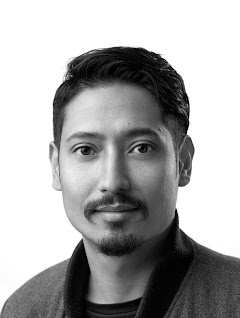Beat
I’ll do almost any assignment that I’m given, but here in Nepal I mostly cover festivals, political issues, and lifestyle stories.
One Shot

“This was taken the day after the 7.8 magnitude quake that left more then 8,500 people dead. It was the most emotional and difficult assignment I’ve covered. I’m lucky that I survived the earthquake but at the same time it was painful to witness the suffering.”
Profile
I was raised as part of a family of artistic photographers and journalism and art were what I wanted to do when I was very young. I thought that I would be a good artist someday, but at that time I never thought that I would be a photojournalist.
Everyone has ups and downs in their life and so did I. I was never able to be a good student or a good son during my school and college days. Everyone who knew me said that I would never do anything in my life but my uncle Gopal Chitrakar, who didn’t lose hope, lent me his old camera whenever there were family gatherings. Holding that camera for the first time gave me a good feeling.
Soon I fell in love with photography and I started to explore with it. Very quickly, my camera became my best friend. To this day, I love to spend time with it. My camera made me the person I am today. I never get tired of taking pictures.
It was when I started working for one of the local newspapers here in Nepal that I got my first assignment. I was thrilled and excited. I was also afraid, and had lots of questions going through my head like: What if I screw up? What if my picture is not good enough? I gave my all to produce a good image and I have to say it was not bad.
The assignment that really left a mark on me was covering the Nepal earthquakes. I saw how things could go wrong in an instance and how vulnerable life is. At one point a man who was working to rescue people shouted at me: "Why are you taking pictures, help if you can." He was right in a way, they needed more hands to help rescue people. I started to dig to search for survivors. I don’t know what I learned from this assignment but it’s surely an assignment that I approached with a pure heart.
When the Nepal earthquake struck I was not at all prepared, but I knew I needed to get out and start working. For the first hours my camera was my barricade as I focused on documenting the devastation. There were dead bodies trapped under rubble, people being rescued, historic sights turned into dust.
For the first time in my life I did not enjoy taking pictures, I was doing it because the world needed to know what had happened. The emotional impact struck as soon as I bumped into a good friend amid the ruins of Bashantapur Durbar Square where we grew up. Covering the devastation made me realise how things can go wrong in an instant and how vulnerable life is.
I try to produce my pictures as simply as I can so that almost anyone can understand them. But being simple is very difficult sometimes when an artistic way of thinking gets mixed up with the picture.
Be at the right place at the right time, and never give up on things easily - that's my biggest lesson. Keep trying and one day, sooner or later, your hard work will pay off.
Behind the Scenes


